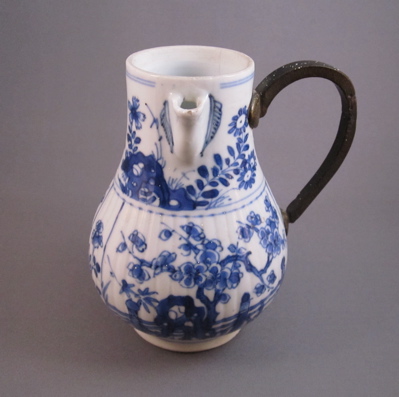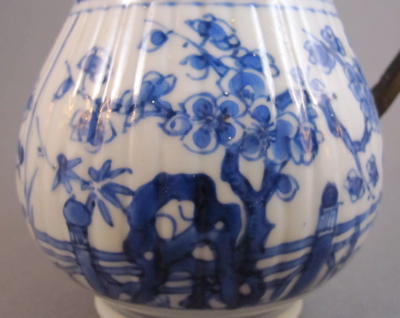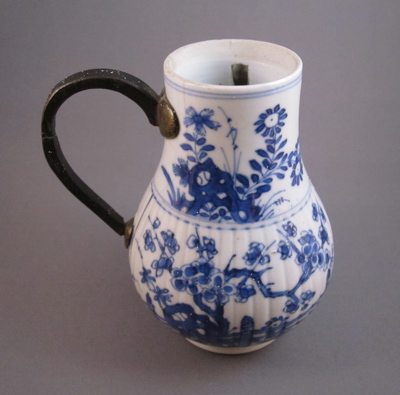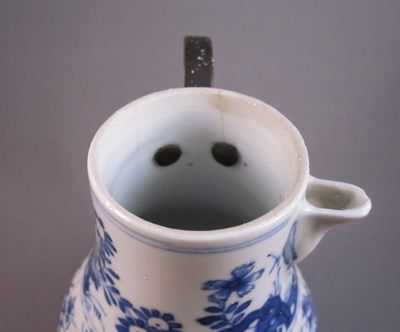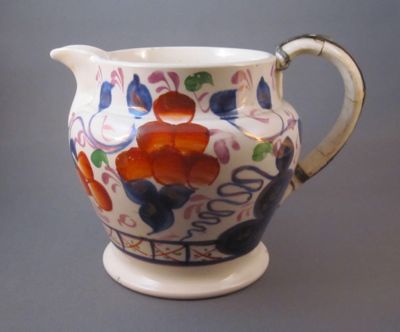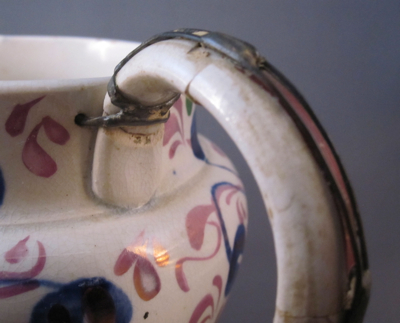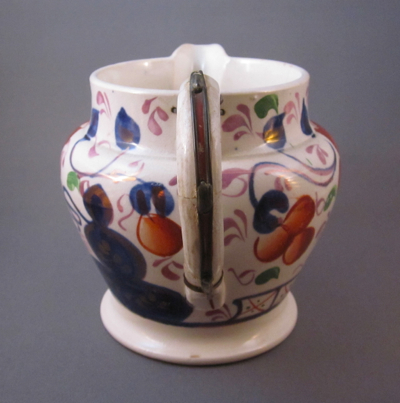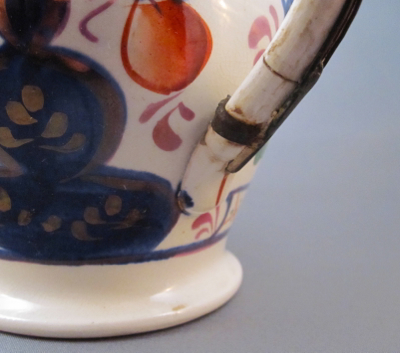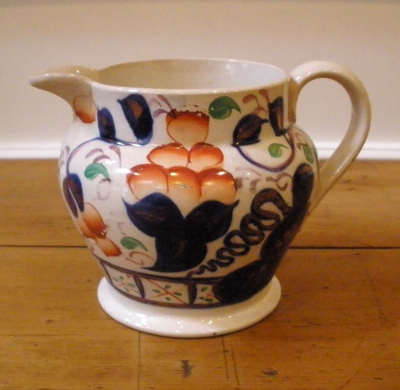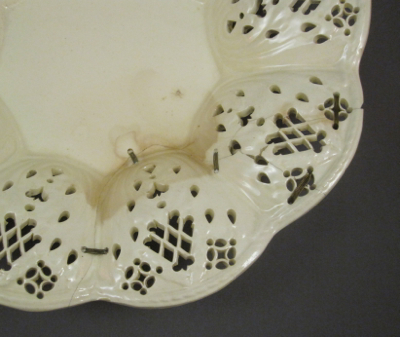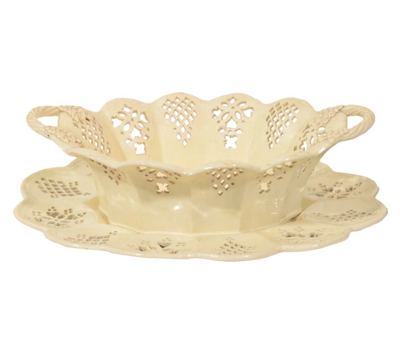This pear shaped, ribbed cruet jug with beak spout was made in China in the mid 1700s for export to North America and Europe. It measures 4-3/4″ high and has hand painted cobalt blue underglaze decoration of cherry trees, floral sprigs and a fence. At one point in its early life, the original loop handle, set at a 45 degree angle to the spout, broke off. Some time in the late 18th or early 19th century it was taken to a metalsmith who fashioned a sturdy bronze replacement. The gilding, visible on the terminals only and not on the handle itself, indicates that it was originally wrapped with rattan. It amuses me to see paint speckles all over the jug and handle, suggesting that one of the owners neglected to cover their treasured items when they painted their room.
These three examples of similarly formed cruet jugs each have their original handles & lids.
Photo courtesy of Christie’s
